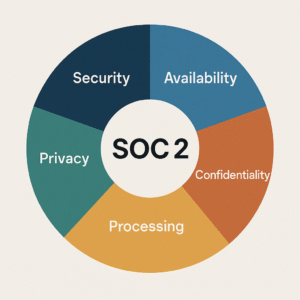The AI-Powered CFO: From Numbers to Strategic Vision

The office of the Chief Financial Officer is changing fundamentally. The AI-powered CFO now uses machine learning, automation, and real-time analytics to convert data into foresight. That shift is altering decision-making, capital allocation, and the role of finance inside the firm. A recent Kyriba survey found that 53% of CFOs believe AI will be the most significant transformation in their roles within five years. More importantly, a handful of CFOs are turning technology into a strategic advantage.
Automating Routine Work, Freeing Strategic Time
Much of the early ROI from AI in finance is operational. Reconciliations, invoice processing, and month-end close are increasingly automated, cutting cycle times and error rates. Industry estimates suggest that a substantial portion of transactional finance work can be streamlined, and practitioners report accounts payable processing time reductions of 20-40%. For the AI-powered CFO, this is not an end in itself. The value lies in redeploying time and people toward capital decisions, pricing strategy, and M&A assessment.
At Fanatics Betting & Gaming, CFO Andrea Ellis reduced AP workflow time from 20 hours to 2 hours during month-end close using custom AI automation for vendor identification and journal entry preparation. At Mercury Financial, CFO Jason Whiting reports that AI has increased the speed of analysis across the board, making existing processes and people more effective.
Forecasting and the New Mandate for Accuracy
Forecasting used to be backward looking. AI has made it forward looking and continuous. Firms that combine internal ERP data with external market indicators see materially better signal extraction. Industry research suggests forecast accuracy gains for adopters, with decision cycles shortening significantly. That matters when liquidity windows close quickly and when pricing, inventory, and labour decisions must be made within hours rather than weeks.
The AI-powered CFO therefore moves from presenting a monthly variance analysis to owning a rolling, scenario-based planning cadence. That changes board conversations. Instead of debating trailing metrics, directors ask about probabilities, sensitivities, and what the organisation would do under adverse paths. The CFO who can translate probabilistic forecasts into crisp policy recommendations acquires outsized influence.
One-Page Capabilities to Judge a Finance Function
Use this checklist when assessing whether a finance team has moved from automation to strategic use of AI:
- Predictive forecasting that blends internal and external data sources.
- Automated transaction processing and exception routing to reduce close cycles.
- Continuous risk monitoring that surfaces anomalies in near real time.
- Scenario modelling used in capital allocation and M&A decisions.
- Learning and development plans to raise data literacy across finance.
This single section clarifies what a board should expect from an AI-enabled finance function.
Risk, Governance, and the Limits of Automation
AI improves detection of fraud and operational issues, but it introduces new governance questions. Models can be brittle, data can be incomplete, and regulatory frameworks remain nascent. CFOs must therefore combine algorithmic output with judgement. Research shows algorithms detect anomalies faster than manual review, sometimes up to five times quicker, but false positives and model drift are real costs. The AI-powered CFO must build robust validation routines, maintain clear audit trails, and set thresholds where human review is required.
Leading finance organizations illustrate this balance by using AI to flag risks and then convening cross-functional review to decide remediation and strategy. That human in the loop is the control that prevents overreliance on an imperfect model.
People, Procurement, and the Wider Strategic Remit
Adopting AI is a procurement question, a talent question, and a strategy question. Many CFOs now act as stewards of the company’s technology budget, evaluating vendor models and their total cost of ownership. They must judge whether to buy capabilities from niche providers or to integrate in-house. A 2024 survey showed 65% of CFOs prioritise upskilling teams in data and AI. The AI-powered CFO therefore becomes an organiser of talent, aligning technologists, data engineers, and finance professionals to answer strategic questions.
This extends to the M&A agenda. With better forecasting and scenario analysis, CFOs can evaluate potential targets with more precision, quantify synergy timing, and stress test integration plans.
Strategic Outlook
The strategic prize is not faster closes or cleaner ledgers. It is foresight that converts financial insight into competitive action. Companies that treat AI as a capability, not a project, give CFOs the means to shape investment, pricing, and M&A decisions proactively. Bain Capital Ventures reports that 79% of CFOs plan to increase AI budgets in 2025, signalling the shift from experimentation to core capability.
For boards and CEOs, the question is no longer whether to adopt AI in finance. It is how to ensure the CFO is positioned to use AI to steer capital and strategy, while also owning governance and people transformation. The AI-powered CFO who succeeds will blend technical understanding with sceptical judgement and a clear view of the choices that matter.
Conclusion
The AI-powered CFO marks a turning point for corporate finance. By automating routine tasks, improving forecasting, and embedding risk monitoring into daily workflows, these finance leaders convert data into strategic insight. Case studies from Fanatics Betting & Gaming, Mercury Financial, and other firms show practical pathways and pitfalls. The task for boards is to measure not only efficiency gains but also the ability of finance to influence strategic outcomes. In a world of fast moving markets, that influence is the new currency of the CFO.





